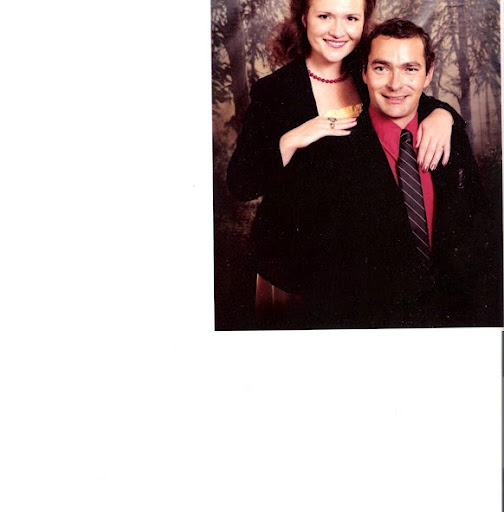Gerald Allen Lowe
age ~76
from Ashland, OH
- Also known as:
-
- Gerald A Lowe
Gerald Lowe Phones & Addresses
- Ashland, OH
- Bloomdale, OH
- 1814 State Route 60, Ashland, OH 44805 • 4193683896
Work
-
Position:Craftsman/Blue Collar
Education
-
Degree:High school graduate or higher
Us Patents
-
Noisemaker Device
view source -
US Patent:44635176, Aug 7, 1984
-
Filed:Dec 20, 1982
-
Appl. No.:6/450925
-
Inventors:Douglas S. Kerr - Ashland OH
Gerald A. Lowe - Ashland OH -
Assignee:The National Latex Products Company - Ashland OH
-
International Classification:G10D 1308
-
US Classification:446421
-
Abstract:A noisemaker formed of molded plastic material having a central body portion with a projection extending from one end thereof and preferably a pair of paddle portions each having a projection extending from an end thereof, with the paddle portions being disposed on opposite sides of the body portion, with the paddle portions including flexible hinge sections adapted for providing for pivotal movement of the paddle portions relative to the body portion, and a separate handle member having a recess receiving therein the projections on the body and paddle portions to hold such portions in generally adjacent relation, with means for locking the handle member to the body and the paddle portions. The paddle portions are adapted to pivot into and out of impacting relation to the body portion upon shaking of the noisemaker by the handle member, thus creating a hand-produced rhythmic-like noise.
-
Water Balloon Filling Valve
view source -
US Patent:54391997, Aug 8, 1995
-
Filed:Dec 20, 1993
-
Appl. No.:8/170582
-
Inventors:Michael Briggs - Ashland OH
Gerald A. Lowe - Ashland OH
Rick C. Geething - Ashland OH
Patrick Wagonfield - Hamilton OH
John S. Zach - Cleveland OH -
Assignee:The National Latex Products Company - Ashland OH
-
International Classification:F16K 324
-
US Classification:251320
-
Abstract:A valve selectively dispenses noncompressible fluid from a pressurized source into a receptacle. The valve has a body with a valve spool slidingly retained in a hollow cylinder in the body. The ends of the body are communicated by an internal channel, the first end adapted to engage the source and the second end adapted to engage the receptacle. The hollow cylinder is an intermediate part of the internal channel. The valve spool has first and second enlarged portions that effectively divide the hollow cylinder into first and second noncommunicated chambers. When the valve spool is in a closed position, the first end is communicated only with the first chamber and the pressure of the fluid in the first chamber provides an outward biasing force on the valve spool, keeping it in the closed position. When the valve spool is moved to an open position by application of an external force on the valve spool overcoming the outward biasing force, the first end is communicated with both the first chamber and the second chamber, which has a link with the second end, allowing fluid flow through the valve. Release of the external applied force allows the pressure of the fluid in the first chamber to restore the valve spool to the closed position.
Medicine Doctors

Gerald Franklin Lowe
view sourceSpecialties:
Family Medicine
Education:
George Washington University (1956)
Resumes

Physical Education Instructor
view sourceWork:
Farmington Central Schools
Physical Education Instructor
Physical Education Instructor
Skills:
Curriculum Design
Curriculum Development
Sports
Educational Leadership
Teaching
Public Speaking
Higher Education
Classroom
Fundraising
Lesson Planning
Educational Technology
Curriculum Development
Sports
Educational Leadership
Teaching
Public Speaking
Higher Education
Classroom
Fundraising
Lesson Planning
Educational Technology

Gerald Lowe
view source
Gerald Lowe
view source
Gerald Lowe
view source
Gerald Lowe
view sourceLocation:
United States

Gerald Lowe
view sourceLocation:
United States
Flickr
Youtube
Classmates

Gerald Lowe
view sourceSchools:
Avon High School Avon IL 1972-1976
Community:
Dorothy Haar, Chip Stephens, Jacqueline Jackie, David Keil

Gerald Lowe
view sourceSchools:
Hitchcock High School Hitchcock TX 1985-1989
Community:
Lynn Mcdonald, Lynette Briggs, Cassandra Harrison

Gerald Lowe
view sourceSchools:
South Torranc High School Torrance CA 1958-1962
Community:
Terry Thompson, John Newton, Patricia Reyes

Gerald Lowe
view sourceSchools:
Bozeman High School Bozeman MT 1935-1939
Community:
Thomas Duncan, Vance Johnson, Jerry Schmidt

Gerald Lowe
view sourceSchools:
New Underwood High School New Underwood SD 1965-1969
Community:
Tucky Tifft, Terry Miller, Darrell Olson, Marcia Evans, Noel Sorenson, Peggy Cox, Gregory Hall, Peggy Wieser, Gale Simmons, Connie Duncan

Gerald Lowe, Chantilly Hi...
view source
New Underwood High School...
view sourceGraduates:
Anita Humphrey (1965-1969),
Lee Gossard (1976-1980),
Robert Furrow (1940-1944),
Gerald Lowe (1965-1969)
Lee Gossard (1976-1980),
Robert Furrow (1940-1944),
Gerald Lowe (1965-1969)

St. Anthony of Padua High...
view sourceGraduates:
Gerald Berkery (1954-1958),
Gerard Lowe (1962-1966)
Gerard Lowe (1962-1966)

Gerald Lowe
view source
Gerald F Lowe
view source
Gerald Lowe
view source
Gerald Bunkers Lowe
view source
Gerald Lowe Jr
view source
Gerald Lowe
view source
Gerald K. Lowe
view source
Gerald Lowe
view sourceGoogleplus

Gerald Lowe
Work:
Sentara Northern Virginia Medical Center - RN
Education:
Walden University

Gerald Lowe
Education:
University of Texas at Austin

Gerald Lowe

Gerald Lowe

Gerald Lowe

Gerald Lowe
Myspace

Gerald Lowe
view sourceGet Report for Gerald Allen Lowe from Ashland, OH, age ~76













